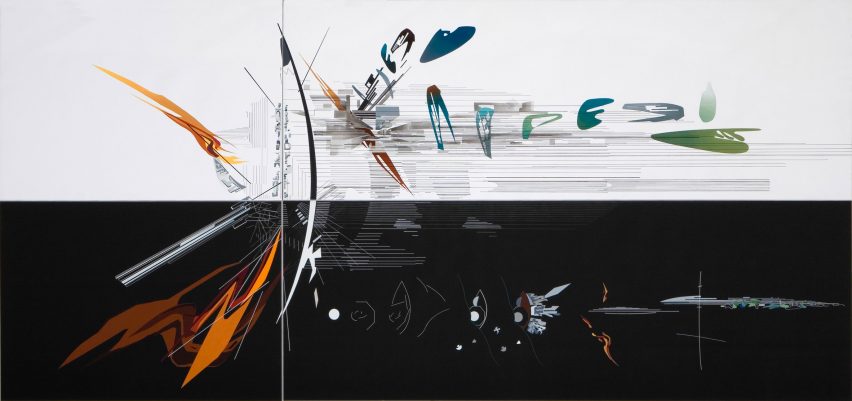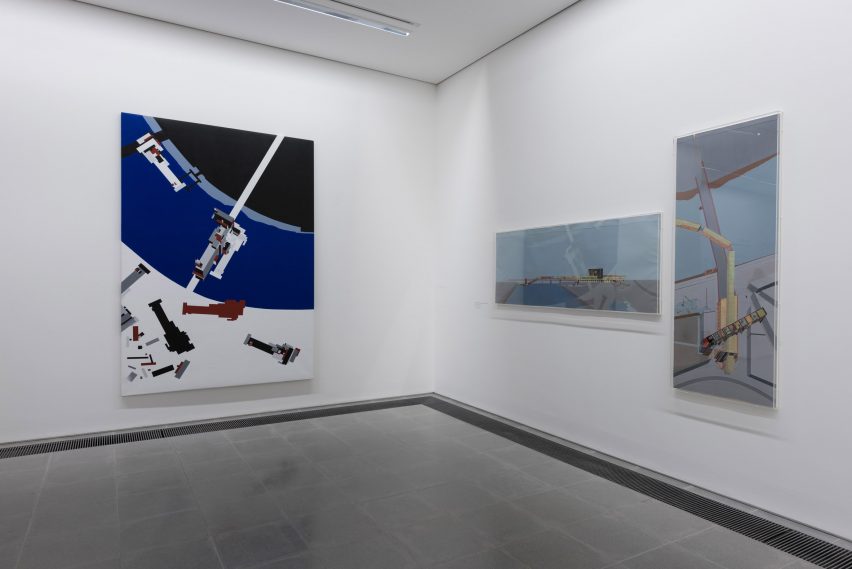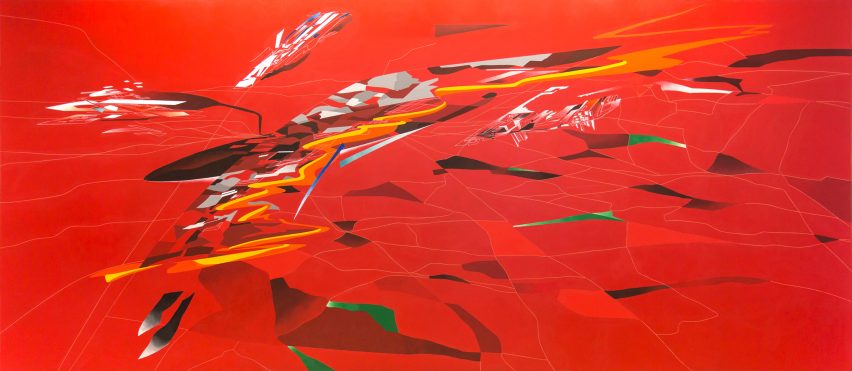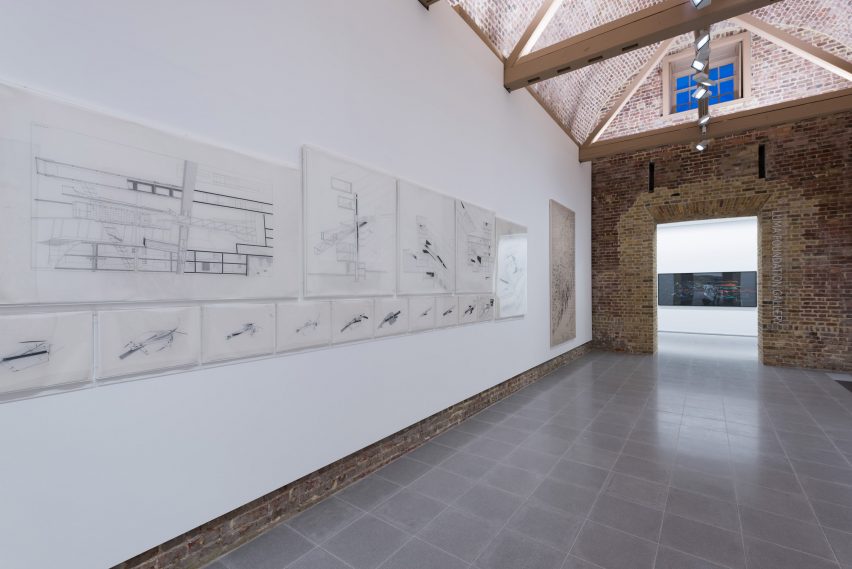Zaha Hadid's abstract paintings translated into immersive virtual reality experiences at Serpentine Gallery
Four of Zaha Hadid's abstract paintings have been used to create animated virtual reality environments for an exhibition of her early work at the Serpentine Sackler Gallery.
Zaha Hadid Virtual Reality Experience: The Great Utopia
The Serpentine Galleries collaborated with the VR department at Zaha Hadid Architects and Google Arts and Culture to create the virtual reality experiences, which form part of the exhibition Zaha Hadid: Early Paintings and Drawings.
They worked with digital production agency Novelab to translate the abstract artworks into 360-degree virtual environments, which visitors can view using a HTC Vive headset.
Within a wire-frame view of the gallery space, the four paintings on the wall can be selected by using a motion sensor embedded in the headset. The paintings then become animated, and unravel into their various elements, as shown in these four videos named The Peak, The Great Utopia, The World and Leicester Square.
Zaha Hadid Virtual Reality Experience: The World (89 Degrees)
The idea to digitise the artworks originates from an earlier conversation between Serpentine Galleries director Hans Ulrich Obrist and the late Zaha Hadid, who died in March 2016.
Her studio Zaha Hadid Architects already has it's own in-house virtual reality team, ZH VR Group, which is headed up by Helmut Kinzler.
Zaha Hadid Virtual Reality Experience: Leicester Square
Dezeen spoke to Kinzler, the Serpentine Galleries' digital curator Ben Vickers, and Freya Murray from Google Arts & Culture about the process.
"The VR painting installation was an idea that we pushed for – as a homage to the tragic passing of Zaha last year but also to seed and promote the potential of our VR Group," Helmut told Dezeen.
"The paintings done by Zaha in the 80s represent a level of experimentation and development of architectural ideas that was/were groundbreaking – but also remain as valid and as alive today."

He said that the conversion to virtual reality is a natural extension of the thinking behind Hadid's early paintings, which were influenced by Russian avante-garde artists including Kasimir Malevich.

"The paintings were the medium of choice for Zaha to break away from the 'traditional' architectural toolkit and to introduce a radical and innovative viewing, and to challenge the discourse," said Helmut.
"VR is the reciprocal digital platform today in which we want to show – and connect to – these ideas behind or inside the paintings."

"The paintings offer a highly individual reception and discourse between the designer and the viewer," he added.
"In my view, Zaha made this choice to manifest that the ultimate benchmark and driver of architectural design is the individual."

Murray too believes that Hadid's use of perspective and space in her paintings preempted virtual reality.
"By taking the DNA of four of her paintings into virtual reality, our aim was to offer visitors to the exhibition new insights of the artworks and her architectural vision," said Murray. "It was a collaborative approach and one centred on continuing with Zaha Hadid's legacy of experimentation."
"The first-person perspective inherent to immersive VR is the closest development of this thought and therefore the right medium to continue to explore."

Architects and designers have long predicted that virtual reality tools will transform the industry, allowing buildings and products to be created intuitively in 3D space.
Designer and visualiser Olivier Demangel said that virtual reality will become "more powerful than cocaine", with virtual architecture becoming as convincing as the real thing in just a matter of a few years.
Zaha Hadid: Early Paintings and Drawings continues until 12 February 2017 at the Serpentine Sackler Gallery – a space created by the late architect in 2013, by converting and extending a 200-year-old former gunpowder store.
Project credits:
Serpentine:
Artistic director: Hans Ulrich Obrist
Digital curator: Ben Vickers, Kay Watson
Chief executive: Yana Peel
Exhibition curator: Amira Gad
Google:
Cultural Institute Google: Freya Murray, Amit Sood, Laurent Gaveau, Suhair Khan
Technical programmer Google Lab Paris: Damien Henry
ZHA:
Principal: Patrik Schumacher
Head of ZH VR Group: Helmut Kinzler
CTO ZH VR Group: Jose Pareja-Gomez
Consultant: Andy Lomas
Collaborators: Melodie Leung, Magda Smolinska, Aiste Dzikaraite
Novelab:
Director: Grégoire Parain